Uw bericht is verzonden.
We verwerken je aanvraag en nemen zo snel mogelijk contact met je op.
Het formulier is succesvol verzonden.
Meer informatie vindt u in uw mailbox.


Als je hier bent, is de kans groot dat je monolithische systeem meer een last dan een voordeel aan het worden is. Trage releasecycli, schaalproblemen en een starre architectuur maken het moeilijker om bij te blijven. Hoe groter je app wordt, hoe frustrerender het wordt. Nieuwe technologie integreert niet soepel, de wendbaarheid krijgt een klap en de betrouwbaarheid begint af te nemen.
Microservices kunnen de zaken omdraaien door je systeem modulair te maken, implementaties te versnellen en je precies te laten schalen wat je nodig hebt wanneer je het nodig hebt. Maar hier zit het addertje onder het gras: migreren is niet alleen het splitsen van code. Als je het niet goed plant, kun je eindigen met meer complexiteit, integratie nachtmerries en onverwachte kosten.
In dit artikel neem ik een realistisch stappenplan met je door om van monolith naar microservices te gaan. Geen gewauwel - alleen praktische stappen, zuurverdiende lessen uit onze oplossingsarchitecten en strategieën die echt werken. Laten we erin duiken.
Ik heb veel bedrijven gezien die dachten dat microservices de magische oplossing waren, om uiteindelijk te eindigen met meer complexiteit, gebroken workflows en torenhoge kosten. En als er één ding is dat ik heb geleerd, dan is het wel dat meteen de technische kant op springen zonder een solide plan een snelle weg naar chaos is.
Het is verleidelijk om een monolith uit elkaar te halen en services op te starten, maar voordat we de code aanraken, werken we samen met klanten om het waarom, wanneer en hoe van de migratie in kaart te brengen. Op die manier levert elke stap waarde op.
Wanneer klanten bij ons komen om over te stappen van monolith naar microservices, vraag ik wat hun beslissing om over te stappen motiveert. De antwoorden variëren, maar vaker wel dan niet, hoor ik, omdat hun concurrenten dat ook doen. En eerlijk gezegd is dat geen goede reden. In microservices springen zonder een duidelijk doel leidt meestal alleen maar tot meer hoofdpijn, niet tot werkelijke vooruitgang.
Vraag jezelf dus af voordat je de sprong waagt:
Als je niet 100% zeker bent, geen probleem. We helpen je vooraf de belangrijkste meetgegevens en bedrijfsresultaten te definiëren, zodat elke technische beslissing effect heeft.
Microservices zorgen voor modulariteit, onafhankelijke schaalbaarheid en snellere innovatie. Maar ze zijn geen wondermiddel. Sommige bedrijven doen het prima met een monoliet, vooral als hun app eenvoudig en stabiel is en niet veel verandert.
Stel je een klein werknemersportaal of een inventarisatiesysteem voor dat slechts door een handvol mensen wordt gebruikt. Als het goed werkt en geen constante updates nodig heeft, kan het opsplitsen in microservices een hoop complexiteit toevoegen zonder echt voordeel.
Daarom pushen we microservices niet zomaar. In plaats daarvan kijken we naar wat je specifiek nodig hebt en of microservices echt iets opleveren. Als dat zo is, geweldig - dan gaan we ervoor. Zo niet, dan zoeken we een betere oplossing.
Als we eenmaal hebben besloten dat microservices de juiste stap zijn, geven we je systeem graag een volledige gezondheidscheck om te zien hoe alles met elkaar verbonden is. We zoeken naar trage plekken, potentiële afhankelijkheidsproblemen en waar al die kritieke gegevens zich bevinden.
Deze stap overslaan is riskant. Als je niet weet wat er onder de motorkap zit, kun je per ongeluk het hele systeem als dominostenen omgooien. Door in kaart te brengen wat werkt, wat achterblijft en wat kapot zou kunnen gaan, maken we een slim migratieplan dat de meest kritieke gebieden als eerste aanpakt, waardoor risico's worden geminimaliseerd, downtime wordt voorkomen en de overgang zo soepel mogelijk verloopt.
Inmiddels heb je waarschijnlijk al geraden dat ik geen fan ben van het van de ene op de andere dag afbreken van een hele monoliet. Het is te riskant, te verstorend en meestal de stress niet waard. In plaats daarvan kies ik voor een stapsgewijze aanpak waarmee je snel winst boekt terwijl je activiteiten stabiel blijven.
Een van mijn favoriete strategieën is het Strangler Fig patroon, dat je oude systeem en nieuwe microservices naast elkaar laat bestaan totdat je klaar bent voor de volledige overdracht.
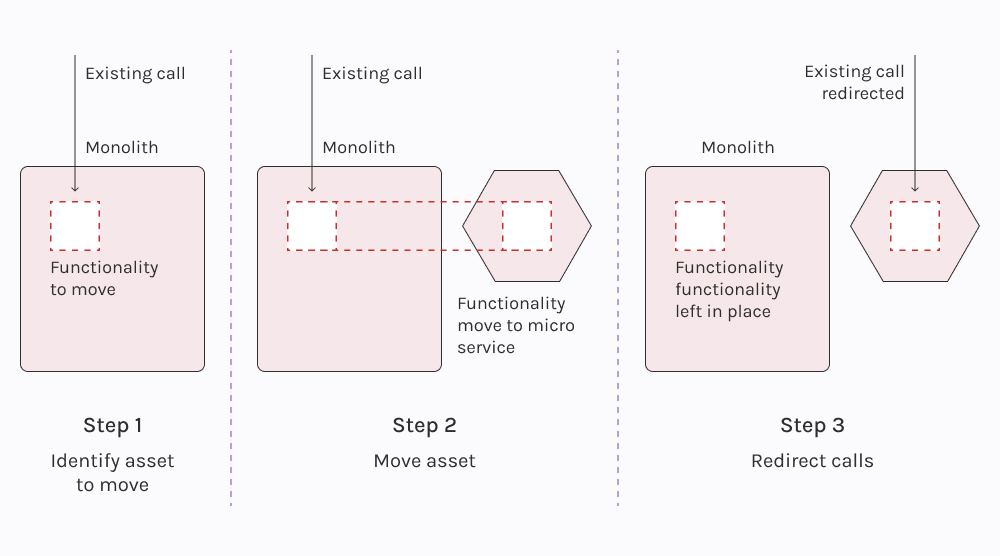
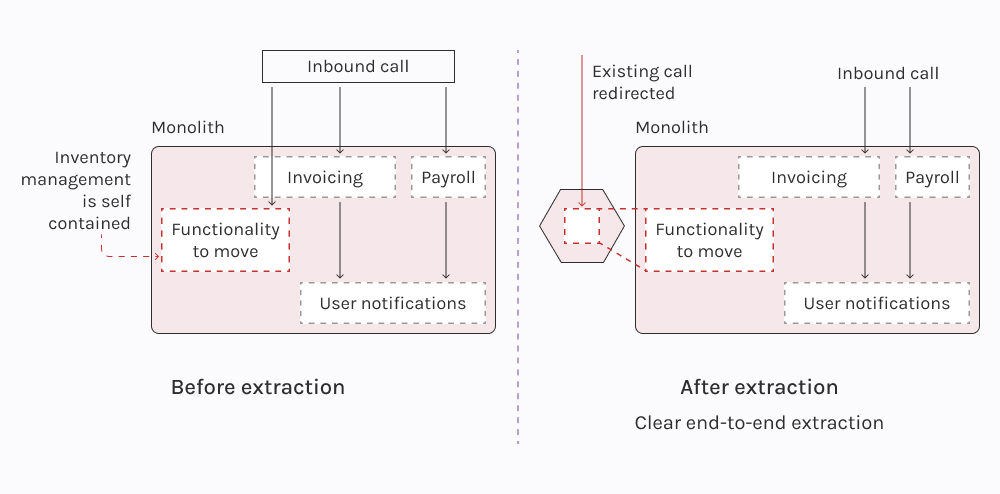
Branch by Abstraction is handig als je veranderingen moet aanbrengen in de monoliet zelf: we voegen een laag toe, verplaatsen componenten één voor één en trekken de oude dingen met pensioen zonder de boel op te blazen.
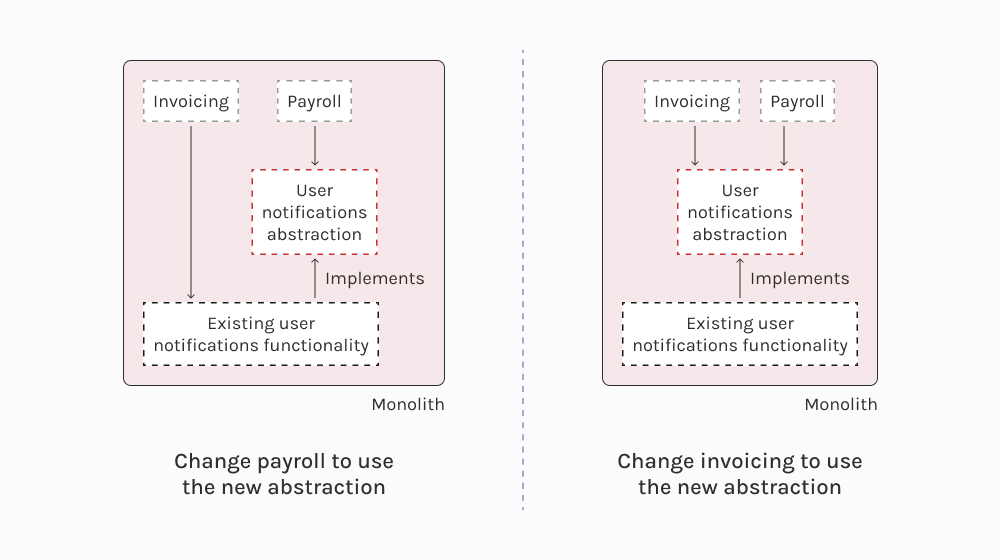
Als betrouwbaarheid van cruciaal belang is, laat Parallel Run beide systemen draaien en vergelijk je de uitvoer voordat je je er volledig op vastlegt.

En als je niet met de monoliet kunt knoeien, kunnen we met Change Data Capture databasewijzigingen bijhouden om microservices synchroon te houden.

Er is niet één beste methode - het hangt allemaal af van je opstelling. Ons team kiest ook welke onderdelen het eerst worden gemigreerd, waarbij de nadruk ligt op de onderdelen met de grootste impact. Neem een e-commerce kassasysteem dat dagelijks duizenden bestellingen verwerkt of een engine voor gegevensanalyse die voortdurend wordt bijgewerkt - die moeten het eerst worden gemigreerd. Op die manier ziet u snel echte voordelen en blijft uw bedrijfsvoering gezond.
Integratie van microservices betekent ook dat je de manier waarop je teams werken moet veranderen. In plaats van één groot team dat een monoliet afhandelt, stel ik voor om over te stappen op kleinere, cross-functionele teams die elk eigenaar zijn van een specifieke microservice. Op deze manier worden beslissingen sneller genomen en weet iedereen precies waar hij of zij verantwoordelijk voor is.
Bovendien brengen onze experts vanaf dag één DevOps-principes en automatisering in, zodat het uitrollen van nieuwe functies soepel en probleemloos verloopt.
"Overschakelen van monolith naar microservices is niet zomaar een technische aanpassing - het raakt je ontwikkelingssnelheid, systeemstabiliteit en je vermogen om te schalen. Zonder een goed doordacht plan kunnen de kosten de pan uit rijzen en kunnen integraties een echte hoofdpijn worden. Bij Innowise maken we de overgang soepel en efficiënt, zodat je de zaken wendbaar kunt houden en je kunt concentreren op de groei van je bedrijf."

Dmitry Nazarevich
CTO
Zodra we de migratiestrategie in kaart hebben gebracht, is de volgende grote vraag hoe we monolith in microservices kunnen opsplitsen zonder er een puinhoop van te maken. Ik heb bedrijven gezien die ofwel alles in één keer probeerden te ontkoppelen, of gewoon willekeurige modules kozen om op te splitsen. Hoe dan ook, het leidt tot tijdverlies, gebroken afhankelijkheden en maanden van frustrerend herwerk.
Mijn vuistregel: houd het zakelijk. Dat betekent dat elke microservice moet overeenkomen met een echte bedrijfsfunctie, niet met een willekeurig stuk code.
Een van de meest voorkomende valkuilen die we zien is het opsplitsen van een monoliet in technische lagen. Ik bedoel het scheiden van de frontend, backend en database in verschillende services. Dat is een zekere manier om te eindigen met strak gekoppelde, te spraakzame microservices die niet goed schalen. In plaats daarvan gaan we voor Domain-Driven Design (DDD) en bounded contexts om dingen op te splitsen op een manier die echt zinvol is.
Neem een e-commerce platform. In plaats van het op te splitsen in een algemene front-end service en back-end service, scheiden we het in echte bedrijfsfuncties zoals orderverwerking, voorraadbeheer, betalingen en gebruikersbeheer. Elke service bezit zijn eigen logica en gegevens, waardoor ze losjes gekoppeld blijven zodat ze onafhankelijk van elkaar kunnen schalen en evolueren zonder al het andere kapot te maken.
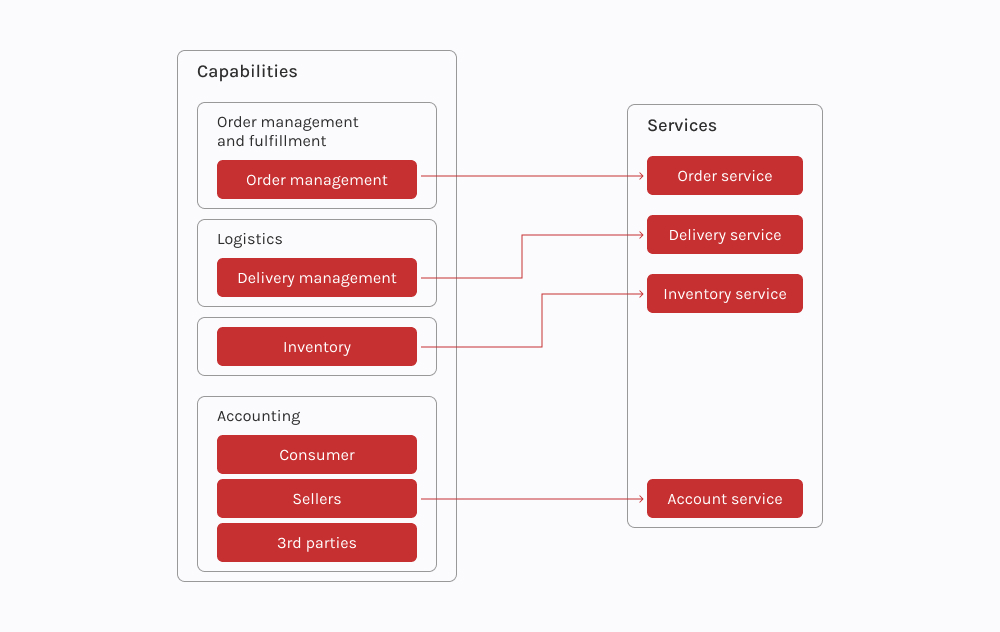
Ik ben geen fan van de "big bang" aanpak. Alles in één keer proberen te migreren is vragen om problemen. In plaats daarvan richten we ons op wat we als eerste moeten afbreken door te kijken naar:
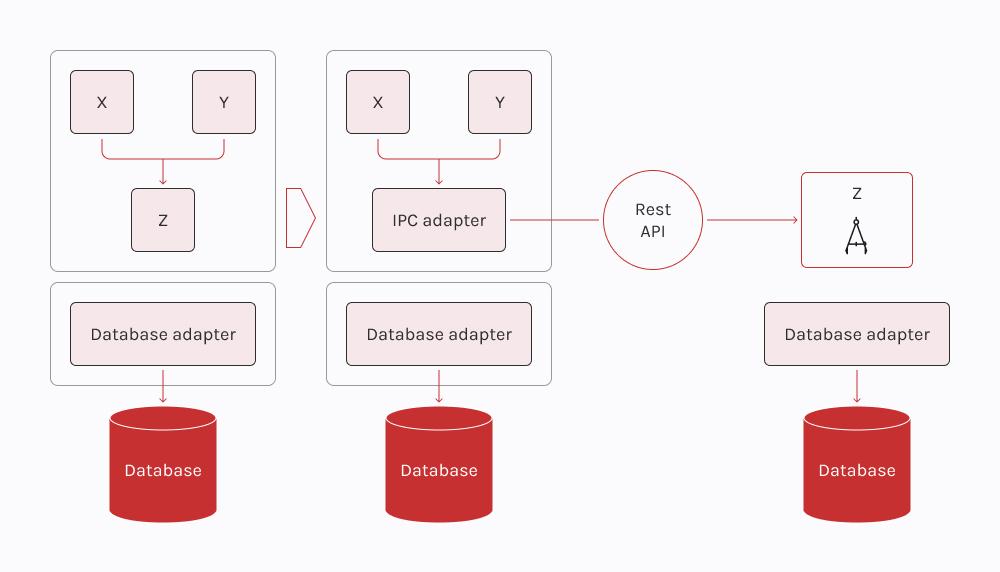
Deze aanpak helpt ons om quick wins te scoren en vroegtijdig waarde te laten zien, waardoor het gemakkelijker wordt om buy-in van het team te krijgen. Bijvoorbeeld, in een HR-systeem kan salarisverwerking een geweldige microservice zijn, omdat het complexe, regio-specifieke berekeningen uitvoert. Maar een statische bedrijfsgids? Dat is waarschijnlijk de extra overhead niet waard en kan nog wel even in de monoliet blijven.
Het laatste wat we willen is monolith omzetten naar microservices en toch eindigen met een stel diensten die te veel van elkaar afhankelijk zijn. Om dit te voorkomen:
Door services losjes gekoppeld te houden, kunnen we ze upgraden of aanpassen zonder ons zorgen te maken dat al het andere kapot gaat.
Zoals ik al eerder zei, schitteren microservices pas echt als elk team van begin tot eind eigenaar is van hun dienst. Je krijgt sneller feedback, meer verantwoordelijkheid en veel minder heen-en-weer gepraat tussen teams. Bij Innowise helpen we bedrijven om hun teams zo in te richten dat devs, ops, QA en alle anderen soepel kunnen samenwerken.
Nadat we je monoliet hebben opgesplitst in microservices, is de eerste vraag meestal wat we met de gegevens doen? In een monolithische opstelling is alles gebonden aan één grote database, die werkt tot hij niet meer werkt. In een microservices-opstelling wordt die gedeelde database al snel een bottleneck, die alles vertraagt en het onmogelijk maakt om services onafhankelijk te schalen.
Daarom pleit ik voor een gedecentraliseerd datamodel, waarbij elke microservice eigenaar is van zijn eigen data. Als dit goed wordt gedaan, kan elke service groeien, zich aanpassen en schalen zonder constant over elkaar heen te struikelen.
Een massieve, alles-in-één database lijkt misschien de makkelijkste weg, maar in een microservices-opstelling wordt het al snel een bottleneck. Elke service heeft andere behoeften en als je alles in één database propt, creëer je alleen maar wegversperringen. Schalen wordt lastig, afhankelijkheden stapelen zich op en zelfs kleine veranderingen kunnen systeembrede problemen veroorzaken.
Daarom splitsen we op in kleinere, service-specifieke microservices:
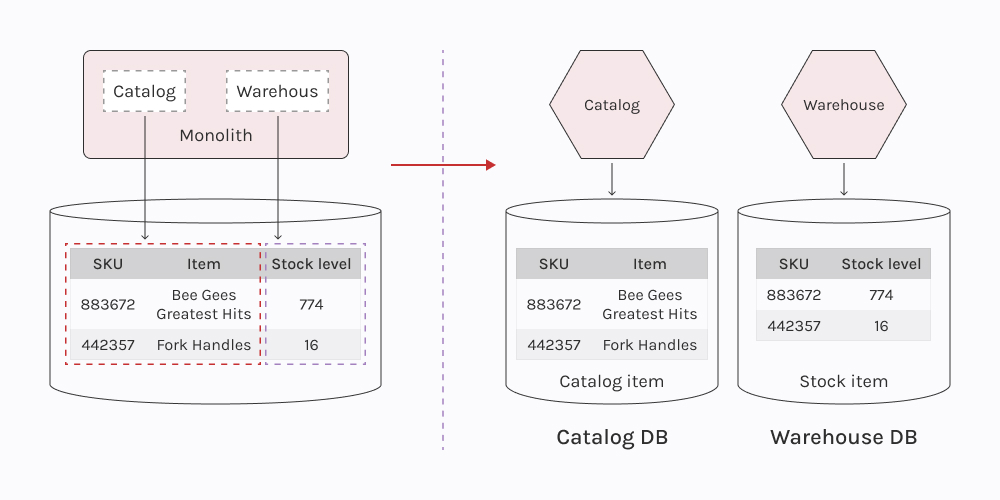
Op deze manier is alles flexibeler, gaan teams niet op elkaars tenen staan en wordt het knelpunt in de database, dat iedereen vertraagt, vermeden.
Het verplaatsen van gegevens uit een monoliet is geen flip-the-switch moment. Een rip-the-bandage-off migratie is riskant, dus geef ik de voorkeur aan een incrementele aanpak, waarbij het stap voor stap wordt afgebroken.
Meestal betekent dat nieuwe tabellen of databases maken voor elke microservice en ze in sync houden met het oude systeem met behulp van Change Data Capture (CDC) of dual writes. Op die manier wordt elke service geleidelijk eigenaar van zijn gegevens - geen downtime, geen onaangename verrassingen.
In een monolith heb je één grote gedeelde database en ACID transacties die ervoor zorgen dat alles samen update (of faalt). Maar bij microservices beheert elke service zijn eigen gegevens, dus updates gebeuren niet onmiddellijk in het hele systeem.
In plaats van directe updates praten services via asynchrone berichtenuitwisseling. Stel dat er een order wordt geplaatst, dan vuurt de Order Service een event af en de Inventory Service luistert mee om de voorraad aan te passen. Deze opzet zorgt ervoor dat alles soepel blijft lopen, zelfs als een service tijdelijk uitvalt.

Dat betekent natuurlijk dat we op een slimme manier met consistentie moeten omgaan. Bij Innowise gebruiken we idempotente operaties om duplicaten te voorkomen, retry-mechanismen om haperingen op te vangen en dode letter wachtrijen om fouten op te vangen. Zo blijven uw gegevens accuraat, zelfs als de dingen niet gaan zoals gepland.
Goed, nu we duidelijke servicegrenzen en een solide datamigratieplan hebben vastgesteld, is het tijd om de mouwen op te stropen en de strategie om te zetten in actie. Laten we eens kijken hoe we dat voor elkaar krijgen.
Ons ontwikkelingsteam bouwt microservices met moderne tools zoals Spring Boot en Node.js, om ervoor te zorgen dat ze gebouwd zijn om te schalen en echte uitdagingen aan te kunnen. Om alles soepel te laten verlopen, gebruiken we slimme ontwerppatronen zoals stroomonderbrekers om verkeerspieken te beheren en sierlijke degradatie om cascadestoringen te voorkomen. Op die manier blijft de rest van je systeem probleemloos draaien, zelfs als één service vastloopt.
Je monoliet 's nachts afsluiten? Dat gebeurt niet. In plaats daarvan zetten we integratielagen op met RESTful API's en message brokers zoals RabbitMQ of Apache Kafka om je nieuwe microservices en bestaande systemen synchroon te houden. Deze fungeren als bruggen die alles soepel laten communiceren zonder workflows te verstoren.
En als het zinvol is, brengen we ook API-gateways in om interacties te stimuleren en te beveiligen, zodat een soepele overgang zonder downtime gegarandeerd is.
We containeriseren je microservices met Docker zodat ze snel, flexibel en eenvoudig te beheren zijn. Met Kubernetes die de orkestratie regelt, is het opschalen tijdens drukke tijden of het uitrollen van updates over verschillende omgevingen een fluitje van een cent. Deze opzet houdt alles consistent, voorspelbaar en kosteneffectief, zodat je IT-operaties nooit als een dolle boel aanvoelen.
Ons team zet CI/CD-pijplijnen op met tools zoals Jenkins, GitLab CI of CircleCI om testen, bouwen en implementaties automatisch af te handelen. Geen handmatige updates of last-minute brandoefeningen meer. Bugs worden vroegtijdig ontdekt, releases gaan sneller de deur uit en het systeem blijft ijzersterk.
Zonder de juiste beveiligingen kan zelfs het best ontworpen systeem tegen knelpunten aanlopen, onverwachte storingen vertonen of gewoon crashen op het slechtste moment. Daarom hanteert ons team een no-shortcuts aanpak, waarbij alles wordt geautomatiseerd en problemen worden opgevangen voordat ze echt problemen veroorzaken.
Testen is niet alleen de laatste stap, het is onderdeel van het hele proces. Ons AQA-team gebruikt geautomatiseerde testsuites met meerdere lagen om fouten in een vroeg stadium op te sporen, zodat er niets door de mazen van het net glipt.
Niemand wil dat een slechte release zijn systeem platlegt, gebruikers frustreert of inkomsten misloopt. Daarom houdt ons team implementaties veilig, gecontroleerd en klaar voor rollback met beproefde strategieën.
Laten we zeggen dat een winkelbedrijf een loyaliteitsprogramma op basis van punten wil lanceren, maar dat het bestelsysteem te complex is om veilig aan te passen. Een winkelbedrijf wil een loyaliteitsprogramma op basis van punten lanceren, maar het bestelsysteem is te complex om veilig aan te passen. Om het veilig te spelen, testen we het eerst met een kleine groep. Als alles goed gaat, rollen we het breder uit.
Als we er zeker van zijn dat de groene versie goed is, schakelen we het verkeer meteen om. Als er iets misgaat, schakelen we terug naar blauw. Geen downtime, geen stress.
Een reisplatform wil bijvoorbeeld realtime prijzen toevoegen, maar als het oude systeem in de war wordt geschopt, kan dat het boeken in de war sturen. In plaats van alles op alles te zetten, gaat ons team over op blauw-groen en sturen we eerst een kleine groep gebruikers naar de nieuwe opzet. Als alles goed gaat, schakelen we iedereen over. Als het misgaat, gaan we meteen terug.
Stel je voor dat een e-commercebedrijf een AI-gestuurde aanbevelingsmachine uitrolt. In plaats van de schakelaar voor iedereen om te zetten, gebruiken we Feature Flags om het eerst in te schakelen voor terugkerende klanten. Als de betrokkenheid en verkoop stijgen, breiden we uit; zo niet, dan zetten we het direct uit.
Tegelijkertijd voert ons team A/B-tests uit, waarbij het oude systeem wordt vergeleken met het nieuwe en belangrijke gegevens zoals winkelwagenwaarde en conversiepercentages worden bijgehouden. Deze gegevens helpen ons om de AI te verfijnen voordat we het systeem volledig lanceren.
Microservices produceren tonnen gegevens, dus het is een must om de systeemgezondheid in realtime in de gaten te houden. Ons team zet meerlaagse monitoring op met tools als Prometheus, Grafana en New Relic om snelheid, geheugengebruik en fouten bij te houden. Op deze manier kunnen we problemen opsporen voordat ze tot hoofdpijn leiden. Met behulp van ELK Stack, Fluentd en andere tools verzamelen we ook alle logs (in feite het digitale spoor van je apps) op één plek, zodat er niets aan je voorbij gaat. En als er toch iets misgaat, zorgen geautomatiseerde waarschuwingen ervoor dat onze technici er zo snel mogelijk mee aan de slag gaan.
Laten we eerlijk zijn, geen enkel systeem is 100% faalveilig. Hardware gaat kapot, software crasht en cyberbedreigingen blijven zich ontwikkelen. Daarom is gegevensbescherming een must. Daarom zet ons team geautomatiseerde back-upstrategieën op, zodat je kritieke gegevens veilig blijven en eenvoudig kunnen worden hersteld.
Het migreren van monolith naar microservices is niet slechts een eenmalige upgrade, ze hebben voortdurende zorg nodig om optimaal te presteren. Wij zijn er voor de lange termijn en garanderen dat je setup wendbaar blijft, soepel schaalt en zelfs de zwaarste belastingen aankan.
Ons team houdt elke microservice in de gaten, past code aan, optimaliseert databasequery's en regelt de communicatie tussen services zodat alles snel blijft draaien.
Door real-time verkeers- en belastingspatronen te analyseren, passen onze specialisten hun resources dynamisch aan, zodat services met een hoge vraag de boost krijgen die ze nodig hebben zonder dat er te veel wordt uitgegeven.
Uw systeem moet meegroeien met uw bedrijf. Ons team houdt de prestaties in realtime bij, luistert naar feedback en maakt slimme aanpassingen om uw architectuur veilig, efficiënt en kogelvrij te houden.
Terwijl we je microservices verfijnen en uitbreiden, houden we alles goed gedocumenteerd. Op die manier verlopen toekomstige updates en migraties soepel en weet je team precies wat er aan de hand is.
De migratie van monolith naar microservices is een strategische zet voor meer flexibiliteit, schaalbaarheid en veerkracht. Maar spring erin zonder een verstandig plan en je kijkt tegen downtime, gebroken workflows en torenhoge kosten aan. Voor een slimme migratie moet je de grenzen van services vastleggen, op de juiste manier met gegevens omgaan en de best practices voor beveiliging en implementatie volgen.
Bij Innowise helpen we bedrijven deze verschuiving met vertrouwen te maken. Met meer dan 18 jaar in softwaremodernisering en ontwikkeling, kunnen we alles aan, van het beoordelen van je setup en het ontwerpen van een solide migratiestrategie tot het bouwen van schaalbare microservices en het verbeteren van de prestaties. Onze oplossingsarchitecten, DevOps-engineers en ontwikkelaars gebruiken beproefde methoden om risico's te beperken en de impact te maximaliseren, zodat de systemen van uw app kunnen schalen en meegroeien met uw bedrijf.

Hoofd ERP-oplossingen
Michael kent ERP van binnen en van buiten - van het kiezen van het juiste systeem tot het uitzoeken hoe het zal werken met de rest van uw IT-stack. Hij is degene tot wie mensen zich wenden als ze ERP nodig hebben om echte operationele problemen op te lossen in plaats van nieuwe te creëren.




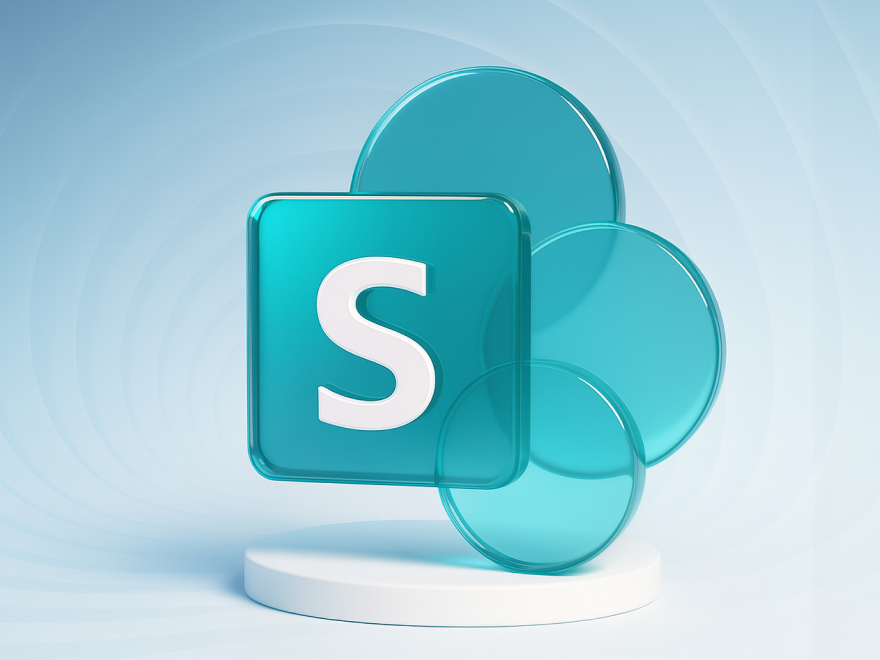



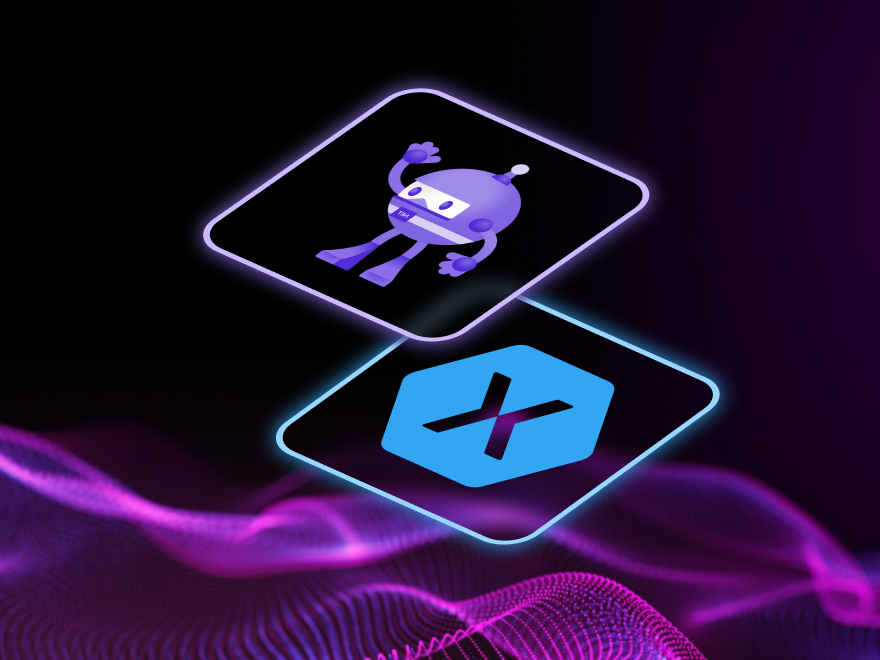



Uw bericht is verzonden.
We verwerken je aanvraag en nemen zo snel mogelijk contact met je op.

Door u aan te melden gaat u akkoord met onze Privacybeleidmet inbegrip van het gebruik van cookies en de overdracht van uw persoonlijke gegevens.